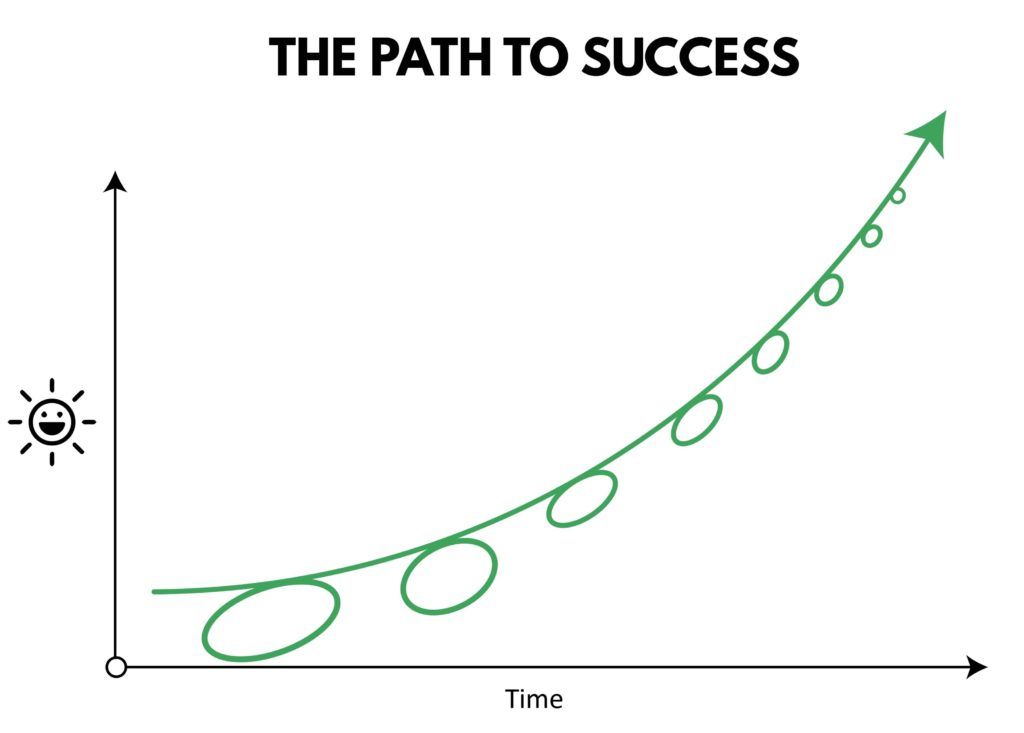The biggest mistake gym owners can make is thinking their current strategy is going to be a winner forever.
The key to long-term success as an entrepreneur isn’t just constant forward motion.
The key is stopping backward motion.
Go forward. And don’t slip backward.
All business is cyclical. Sometimes you’ll grow. Sometimes you’ll shrink. The key is to grow as much as possible when you’re in a growth phase and minimize shrinkage when you aren’t.
Two steps forward, one step back. Then three steps forward, one step back. Then five forward … .

For example, it was pretty hard to grow during COVID shutdowns. So we had gym owners focus on minimizing shrinkage. They cut costs, they renegotiated rent, and they kept as many clients as possible by adjusting their services. When their gyms reopened, they were ready for growth, and the average gym saw an immediate surge of 8 percent or more.
Most entrepreneurs, especially in the fitness industry, can find a bit of success pretty easily. Every few years or so, a great idea emerges that can get you some new clients fast. We’ve reported on some of them on this blog:
- The New You Challenge.
- Check-Ins for Charity.
- Six-week challenges (whole lifestyle challenges and the like).
And new ones always appear on the horizon, like “high-ticket” coaching.
Most of these ideas work for a while. The key is to take the progress you make and keep it instead of slipping backward.
But many gym owners started running one of these promotions, saw some quick wins and became overconfident in the long-term viability of their gyms. Some went all-in on one strategy, and it killed their gyms.
Dig in and Keep Pushing Uphill
Here’s how to stop sliding backward:
1. Reinvest your wins. Why do the most successful people in the world have mentors? Because they’re always looking for the next level. They want to talk with people who have been there already.
2. Watch your data. The first time you use a new marketing strategy, record everything you can: your set/show/close rates, your conversion rate and your length of engagement for new members. The second time you use the strategy, compare your numbers. Are you getting fewer leads? Are the leads getting colder? Are you paying more to acquire a client? Is your retention dropping? If any of these numbers are going down, you’re using a short-term strategy. Use it while it works, but be ready to replace it.
3. Press “save game.” Capture this moment in time: Record all your processes, SOPs, prices, etc. Get it all on paper. Replace yourself with an operations manual. Make your business turnkey. In times of crisis, we fall to the level of our preparation. Get your business out of your head and it’s like pressing “save game” on your gym.
4. Hire a manager. You need someone else to oversee daily gym operations so you’re free to build the next phase. You can’t open a second location if you’re still coaching classes at the first.
5. Don’t repeat mistakes. Your manager is going to make a few mistakes, and that’s OK—as long as the manager doesn’t repeat them. Audit your processes and plans at least every six months. Record what worked—and what didn’t. When someone screws up (including you!) document the error so it’s not repeated.
6. Mentor your staff. It took you years of mistakes, books and probably mentorship to grow as a leader. All that experience and knowledge doesn’t automatically pass to the next person in line. If you don’t mentor people, you’ll be pulled back into gym problems over and over again.
7. Make yourself antifragile. Adopt systems that will allow you to pivot in the event of another business closure. Keep your online programs ready, move to a prescriptive model, and make sure nutrition coaching is a big part of your service.
8. Finally, you need to keep your hands out of the machine. I’m a product guy, so I get it: It’s very tempting (and easy) to keep “tweaking” your training product, micromanaging your staff, and finding mistakes and fixing them. This is the “triage trap” of business, and it stops you from growing. You can’t drive the car with the hood open.
If you follow these steps, you’ll stop the two-steps-forward, two-steps-back dance that prevents most entrepreneurs from succeeding at a higher level.
Instead, you’ll create a ratchet effect of forward progress long term.
Other Media in This Series
“The Next Level: What Will You Build Now?”
“Building the Next Level: All About That Leverage”

